
Odds are, if we’re using sleeping bags at all, it’s because we’re on some adventure that’s going to take a lot out of us. Sleep should come naturally in those circumstances—stars twinkling, water rushing in the distance, cold air floating through your tent, no cars or sirens around to disturb you…
So why does it seem inevitable that your bag will be too hot, too cold, too heavy, too clunky, or too tight? If you haven’t run into such a Goldilocks situation while trying to fall asleep on a hunt or backpacking trip, good on you. But us mere mortals have plenty of bad memories that stretch from sweat puddles to full-body shivers, from straightjacket constriction to needing a road map to find the zipper, usually when you need to get out of your bag quickly.
It doesn’t have to be this way. Anyone who has workshopped their sleeping bag purchase and improved their choices knows how refreshing a full eight hours in the right bag can be.
These expensive purchases should be informed ones, so consider a few details first. Know the climate you’re most likely to sleep outdoors in, and know the climate your own skin and bones create for you. Know how much tolerance you have for extra weight in your pack. Know your general physical circumference, your height, and even whether you’re a side, stomach, or back sleeper. Once you have all that information in line, keep reading.
Jump to: Sleeping Bags We Use
What We Look For in a Sleeping Bag
Truthfully, it might be hard to find a single sleeping bag that meets your needs year-round. You don’t have one jacket for summer rainstorms and winter whiteouts, so why would the same apply for sleeping bags? Of course, because they are on the more expensive side of the spectrum, one bag is probably all most of us have the capacity for. So make sure it gets the job done during the time of the year you’re most likely to be out there. For us, that’s through the fall and winter. With that in mind, we’re considering these three characteristics:
- Warmth-to-weight ratio
- Durability
- Packability
Jump to: What Makes a Good Sleeping Bag
Sleeping Bags We Use
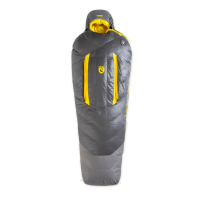 NEMO Sonic Down Mummy Bag
Steve's Pick
|
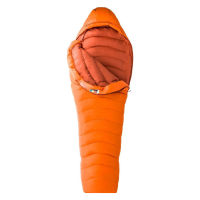 Marmot Couloir * Janis's Pick
|
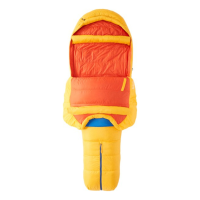 Marmot Never Summer Mark's Pick
|
 Big Agnes Torchlight UL 20
Katie's Pick
|
|
|---|---|---|---|---|
| Weight | 3lb 2oz | 2lb 9.5oz | 3lb 3oz | 2lb 10oz |
| Temperature Rating | 0°F | -5.4°F | -4.7°F | 12°F |
| Fill Type | 800 FP Down | 800 FP Down | 650 FP Down | 850 FP Down |
| Packed Size | 13.0in x 9.5in diameter | 16.1in x 7.5 in | 9in x 18in | 8in x 17.5in |
| Price | $550-$650** | $559** | $320** | $420** |
| Field Notes | Field Notes | Field Notes | Field Notes |
**Price on 7/14/22
What Makes a Good Sleeping Bag
1. Warmth-to-Weight Ratio
My first sleeping bag almost ruined me on the concept of sleeping outside forever. Without naming names, the bag was voluminous, heavy, very un-pack-friendly, and—perhaps most frustratingly of all—not that warm. I’m not sure who field-tested and rated this bag down to its low-end temperature, but I’m a warm sleeper and I still couldn’t trust it to keep me cozy when the mercury dropped.
But I did what all broke 20-somethings do; I struggled through, built a few decent memories with that sleeping bag, and then just recently decided to upgrade for an upcoming backpacking trip. Warmth-to-weight ratio was top on my list of priorities. I wanted half the bulk and twice the heat of my old bag. I was pleasantly surprised to find that pretty much every sleeping bag on the market was lighter and warmer than the one I’d been making do with for the last few years.
2. Durability
All that heat-holding goose down or new-age synthetic insulation isn’t worth a whole lot if the exterior fabric is going to rip upon your first encounter with a rock. These four bags are all constructed of ripstop nylon or polyester and are generally pretty waterproof, snag-proof, and, well, you-proof. With that said, most modern bags will come with patch kits if something should happen, and you should keep a small gear repair kit on you anyway in case disaster strikes and compromises any of your heat-holding or water-sealing gear.
3. Packability
Have you ever hauled around one of those rectangular sleeping bags that pack down to the size of a beer keg and are about as easy to carry? Clearly those aren’t designed for backcountry pack trips, but those flannel interiors sure do make for some cozy frontcountry car camping.
The good news is that modern sleeping bags have become so insanely packable, you’ll struggle to tell the difference between your bag and all the other stuff sacks you’re shoving into your pack. Lots of companies like to make the Nalgene 1-liter water bottle comparison, and they do so with good reason. It’s a feat of modern science to fit so much insulated material into such a small package. Celebrate it by shelling out a little more cash for a little less volume.
How to Take Care of Your Sleeping Bag
After a few nights keeping your unshowered body warm, these bags need some serious airing out. Most modern sleeping bags will come with a separate mesh sack that’s considerably bigger than the smaller, more packable stuff sack. This is meant to store your sleeping bag in. The added volume of the mesh sack means your bag will get a lot more airflow, and the highly breathable fabric means that necessary air has a chance to enter and exit in the first place.
If the stench or soiling requires more than just a solid shake and some hangtime, most bags are machine washable. Make sure you read any tags and instructions first before taking more drastic measures. If it does come through the wash, dry the bag fully before putting it into storage. Nobody likes musty gear.
Field notes from the MeatEater Crew
Steve's Pick
"Based on where I live (the northern Rockies) and the fact that I spend a lot of time in Alaska, my primary fall-winter bag is a 0-degree down bag. That gives me a lot of warmth without much weight. For general spring and summer use, I own a 30-degree synthetic bag. If it gets too warm, I just unzip the bag to cool off." Steve said.
Specifications
- Weight: 3lb 2oz
- Temperature Rating: 0°F
- Fill Type: 800 FP Down
- Packed Size: 13.0in x 9.5in diameter
- Price: $550-$650
Janis's Pick
"As a hunting guide and general outdoor enthusiast I would spend around 100 days in sleeping bags every year. What separates my Marmot down bag from the rest is its ability to keep an amazing loft. That loft equals insulation, and insulation equal warmth. With proper care, I hope to get another twenty out of it." Janis said.
Specifications
- Weight: 2lb 9.5oz
- Temperature Rating: -5.4°F
- Fill Type: 800 FP Down
- Packed Size: 16.1in x 7.5 in
- Price: $559
Mark's Pick
"When I upgraded to the Never Summer down sleeping bag prior to an Alaskan caribou hunt, I realized I'd spent far too many years sleeping in unnecessary discomfort. The upgrade from a synthetic bag to full down not only was noticeable from a warmth perspective, but also in the simple luxurious loft of the bag. It's downright delightful. Not only that but this bag packs up small, has a water resistant treatment, and smartly designed hood and footbox." said Mark.
Specifications
- Weight: 3lb 3oz
- Temperature Rating: -4.7°F
- Fill Type: 650 FP Down
- Packed Size: 9in x 18in
- Price: $320
Katie's Pick
"I haven’t used my Big Agnes Torchlight Ultralight in cold weather yet, but I made this purchase because the internet gearhead peanut gallery told me the warmth-to-weight ratio was unmatched. I really appreciate the strategically located fill that insulates more in areas where women lose more heat, generally throughout the extremities. This bag also features an extra zipper along each side that allows you to expand the bag when you want more room or more airflow and collapse it down when you need maximum heat retention. I’m constantly shifting from my sides to my stomach when I sleep, so having that option for more freedom of movement is great." said Katie.
Specifications
- Weight: 2lb 10oz
- Temperature Rating: 12°F
- Fill Type: 850 FP Down
- Packed Size: 8in x 17.5in
- Price: $420

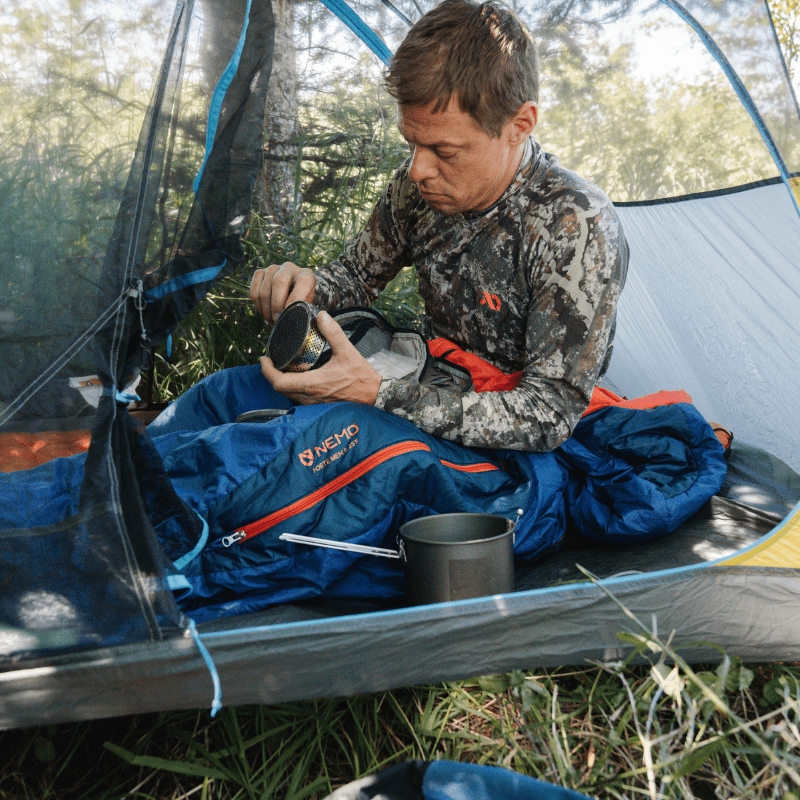
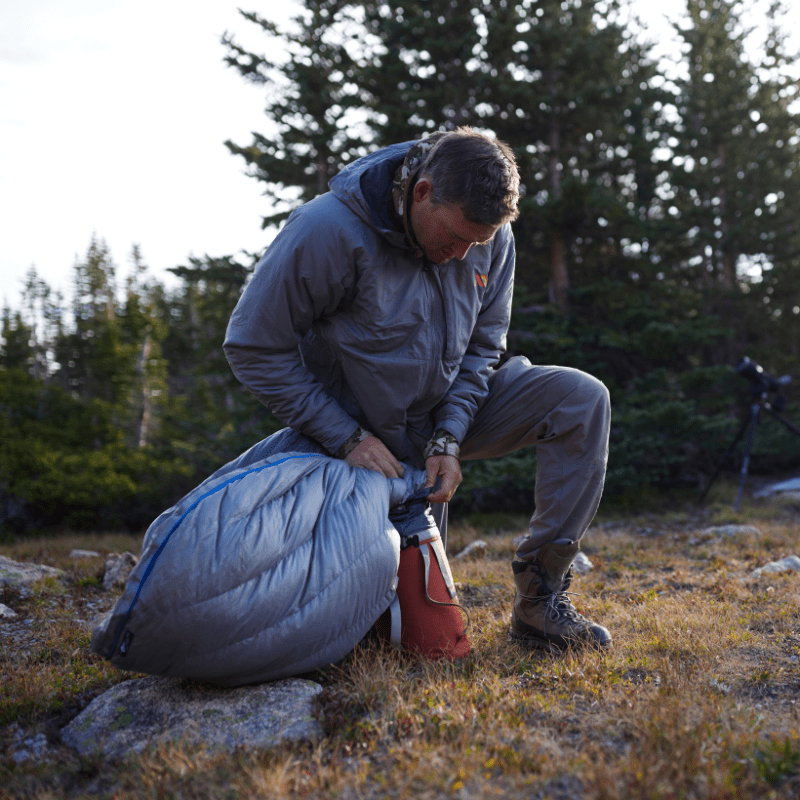
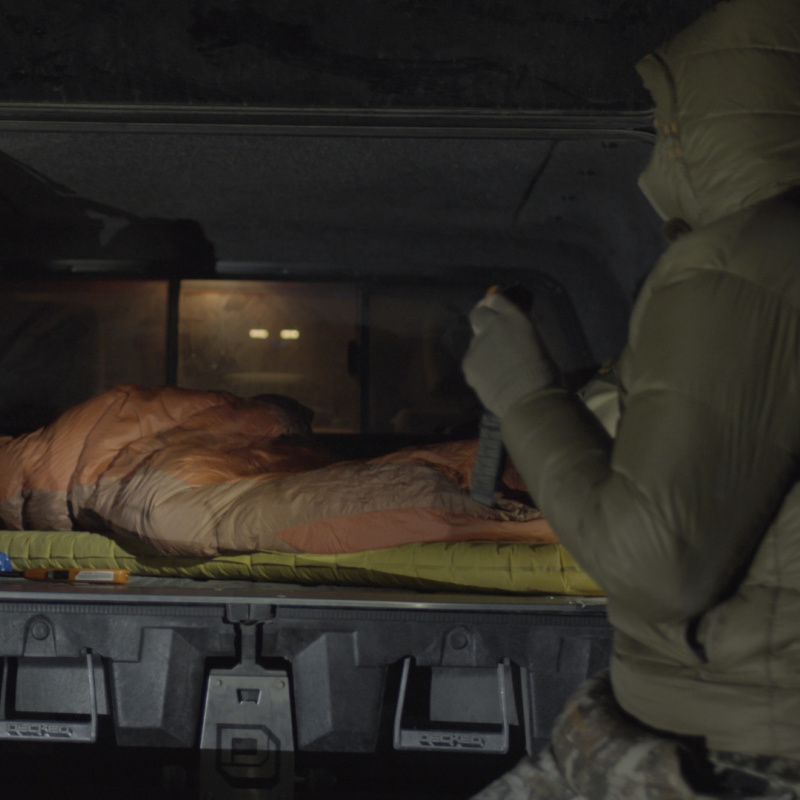
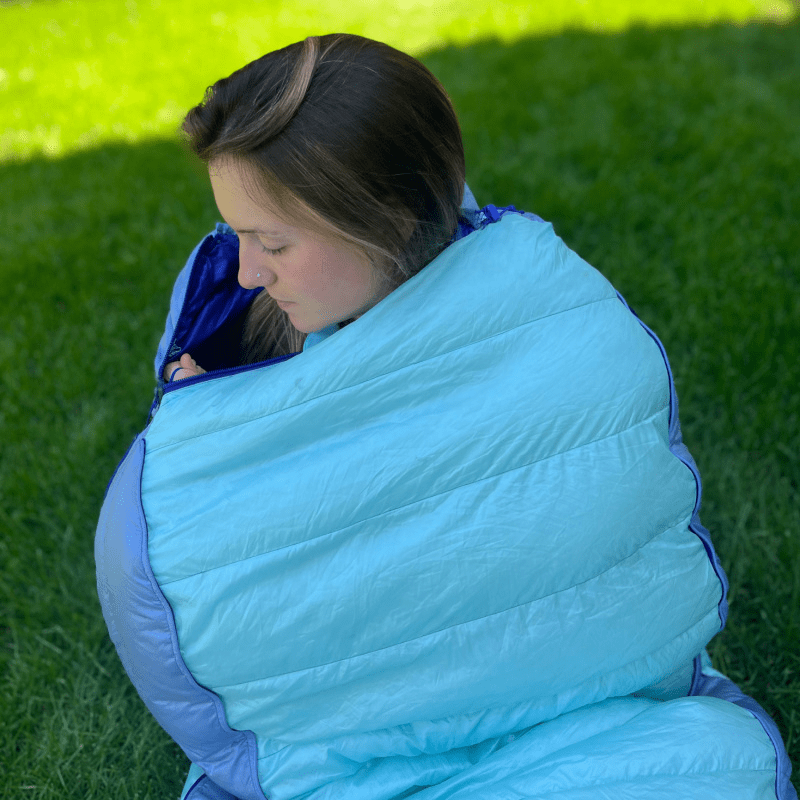
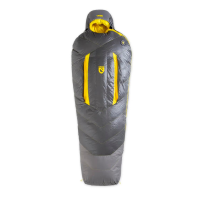









Conversation